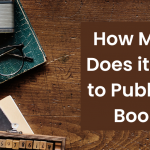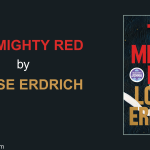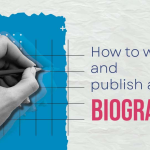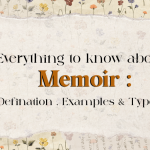Human lives are intricate tapestries woven with experiences, emotions, challenges, and triumphs. Biographies and autobiographies serve as windows into these remarkable stories, offering insight into the lives of individuals who have left their mark on history or those who wish to chronicle their own journeys.
In this guide, we will explore the art of writing biographies and autobiographies, delving into the nuances of both genres and providing valuable tips on how to craft compelling narratives.
You may also like: 10 Best Magical Books That Combine Christmas and Fantasy
Understanding Biography and Autobiography
- Biography: Exploring Lives Beyond the Surface
A biography is a literary exploration that unveils the intricate layers of a person’s existence, transcending the mere listing of events. It provides a comprehensive account of an individual’s life, offering insights into their achievements, struggles, societal impact, and distinct qualities that define them. These narratives serve as windows into history, allowing readers to traverse time and understand the legacy left by remarkable individuals.
Biographies are usually crafted by biographers, individuals skilled in research and storytelling. They undertake a meticulous journey of gathering information from diverse sources, such as historical records, interviews, letters, and secondary literature. The biographer’s role is to curate these fragments of information into a coherent narrative, painting a vivid portrait of the subject. This comprehensive approach lends credibility and depth to the portrayal, enriching the reader’s understanding of the subject’s contributions and character.
Example: Consider the biography of Mahatma Gandhi. A biographer compiling his life story would explore not only his role in India’s fight for independence but also his principles of nonviolence, his experiments with truth, and his impact on the world’s political landscape. By presenting a holistic view of Gandhi’s life, the biography reveals the nuances of his personality, beliefs, and the larger context in which he operated. - Autobiography: The Intimate Dialogue of Self-Discovery
An autobiography is a narrative journey undertaken by the subject themselves—a profound sharing of one’s life experiences, emotions, and reflections. This genre provides readers with an intimate insight into the subject’s psyche, allowing them to witness their life’s trajectory through personal recollections. Autobiographies carry a unique authenticity, as they are composed from the vantage point of the person who lived those moments, providing a firsthand account of their journey.
Autobiographies draw from the subject’s reservoir of memories, emotions, and introspections. This self-exploration leads to a narrative that is often more than a linear chronicle; it becomes a tapestry woven with the threads of emotions, thoughts, and personal revelations. By directly communicating with the reader, the autobiographer creates a powerful connection, allowing readers to step into their shoes and experience their story from within.
Example: A notable example of an autobiography is “The Diary of a Young Girl” by Anne Frank. Written during her time in hiding during World War II, the book offers a candid portrayal of Anne’s life, fears, hopes, and dreams. Through her own words, readers gain a deep understanding of the challenges faced by Jews during the Holocaust, as well as the resilience and humanity that Anne exudes even in the face of adversity.
You may also like: How to Publish a Book | Publish your book | BlueRoseOne
Writing a Biography:
Research: The Foundation of a Compelling Biography
Thorough research is the cornerstone of a captivating biography. Delve into reputable sources like books, articles, interviews, and archives to gather a comprehensive view of your subject’s life. By immersing yourself in these materials, you gain insights into their experiences, motivations, and contributions. Scrutinise the historical context to understand the era’s impact on their journey. Successful research forms the bedrock of your biography, enabling you to present an accurate and nuanced portrayal that resonates with readers. It’s through meticulous research that you uncover the hidden stories and connect the dots, allowing the subject’s essence to shine through the pages.Selecting a Focus: Defining the Narrative Scope
Choosing a focal point is essential for a well-structured biography. Decide whether to cover the subject’s entire life or concentrate on specific periods or achievements. This decision shapes the narrative’s trajectory, preventing it from becoming overwhelming or disjointed. A focused approach allows you to delve deeply into pivotal moments, providing a more profound understanding of the subject’s journey. By clarifying the scope, you enable readers to follow a coherent storyline, making it easier for them to engage with the subject’s life in a meaningful way.Structuring the Biography: Chronology and Themes
The organisation of your biography greatly impacts its readability. Structure your work into logical sections or chapters, employing either a chronological or thematic arrangement. Begin with an engaging introduction that captures readers’ attention and provides essential context. A chronological structure follows the subject’s life in sequential order, offering a clear timeline of events. Alternatively, a thematic structure groups events by themes, allowing you to explore different facets of the subject’s life. A well-structured biography guides readers smoothly through the subject’s experiences, fostering a deeper connection and understanding.Show, Don’t Tell: Evocative Storytelling
Vivid descriptions, anecdotes, and quotes breathe life into your biography. Rather than merely listing facts, employ descriptive language to recreate scenes and emotions, allowing readers to immerse themselves in the subject’s world. Use anecdotes to illustrate key moments, capturing the essence of the subject’s character and the impact of events on their journey. Integrating quotes from the subject, contemporaries, or relevant sources adds authenticity and depth. Through this technique, you transport readers into the subject’s experiences, enabling them to witness the moments that shaped their lives.Balanced Perspective: Portraying Strengths and Flaws
A balanced portrayal adds credibility and depth to your biography. While it’s tempting to focus solely on accomplishments, a well-rounded view includes the subject’s strengths and flaws. This authenticity humanises the subject, making it relatable and multidimensional. By acknowledging both successes and challenges, readers gain a more honest understanding of their journey. Balancing positives and negatives helps readers empathise with the subject, connecting them on a deeper level and offering a more genuine insight into their lives.Engaging Emotions: Creating Emotional Resonance
Emotions are a potent tool in biography writing. Delve into the subject’s feelings, struggles, and aspirations to create an emotional connection with readers. By tapping into their emotional experiences, you make the narrative relatable and engaging. Sharing personal challenges and triumphs allows readers to empathise and reflect on their own lives. This emotional resonance elevates the biography from a mere factual account to a compelling and moving story that lingers in readers’ minds, leaving a lasting impact.Citing Sources: Ensuring Accuracy and Credibility
Accurate information is vital in biography writing. Properly cite your sources to maintain credibility and integrity. Clear citations not only lend authority to your work but also provide readers with the opportunity to explore further if they desire. Accurate referencing safeguards against misinformation and ensures that your portrayal is based on reliable evidence. In addition to enhancing your credibility, thorough citations demonstrate your commitment to thorough research and ethical writing practises, contributing to the overall trustworthiness of your biography.
You may also read: What is Dramatic Irony in Literature? Definition, Examples and Tips

Complete Guide to Write a Biography. Start Writing Your Biography Now
Writing an Autobiography:
Reflecting on Significant Moments and Experiences
Initiating an autobiography involves introspection into your life’s pivotal moments. Delve into memories that have influenced your journey, such as turning points, challenges, relationships, and achievements. Reflect on these experiences, dissecting their impact on your personal growth and development. By contemplating these key events, you gain insight into the narrative threads that weave your life story together. This reflective process sets the foundation for an authentic autobiography that resonates with readers on a profound level.Developing Your Unique Voice and Tone
Crafting an autobiography demands a consistent voice and tone that reflect your personality. Write in a way that feels true to you, capturing your unique perspective and emotions. Authenticity is key, as it allows readers to connect with your narrative on a personal level. Whether your tone is introspective, humorous, or contemplative, ensure it aligns with the essence of your experiences. By embracing your genuine voice, you create an autobiography that not only tells your story but also conveys the essence of who you are.Structured Storytelling for Engagement
While autobiographies can be more flexible in structure compared to biographies, organising your narrative into coherent sections or themes enhances its readability. By grouping related experiences together, you provide readers with a clearer understanding of the themes that have shaped your life. This structure helps maintain their engagement by guiding them through your journey in a logical and compelling manner. While allowing for creativity, a structured approach ensures that your autobiography remains focused and accessible.Embracing honesty and authenticity
Honesty is the bedrock of an impactful autobiography. Share not only your triumphs but also your mistakes and failures. Authenticity creates relatability, allowing readers to connect with your humanity and vulnerabilities. Your journey’s challenges and setbacks are just as integral to your story as your successes. By being candid about your experiences, you demonstrate resilience and growth, inspiring readers to reflect on their own paths. This level of authenticity fosters a deeper connection, making your autobiography a source of empathy and encouragement.Adding Depth Through Reflection
Incorporate reflection to imbue your autobiography with depth and meaning. Explore the lessons you’ve learned from your experiences and the transformations they’ve prompted. Delve into how these moments shaped your beliefs, values, and perspective on life. By offering insights gained from introspection, you provide readers with wisdom and a broader understanding of your journey. Reflection transforms your autobiography from a chronicle of events into a thoughtful exploration of personal growth and the profound impact of life’s moments.Creating vivid details for immersion
Immerse readers in your world by employing sensory details and vivid descriptions. Paint a picture with words, allowing readers to visualise the scenes and emotions you’re describing. By incorporating sensory elements like sights, sounds, smells, and feelings, you transport readers into the moments you’re recounting. This immersive experience draws them closer to your story, fostering a stronger connection. Vivid details not only make your autobiography more engaging but also enable readers to forge a deeper connection with your experiences and emotions.
In the realm of literature, biographies and autobiographies stand as powerful testaments to the diversity and richness of human existence. Whether you’re capturing the life of a historical figure or penning your own life story, the art of writing these genres involves meticulous research, introspection, and a keen understanding of human emotions.
You may also read: Top 10 Classic Literature Books Everyone Should Read At Least Once
Through carefully chosen words and evocative storytelling, biographers and autobiographers alike can craft narratives that resonate with readers and offer a deeper understanding of the human experience. So, whether you’re writing about the extraordinary or the everyday, embrace the challenge and privilege of narrating lives through the written word.
Publish your book with BlueRoseONE and become a bestselling author. Don’t let your dream of becoming an author fade away, grab the opportunity now and publish your book – be it fiction, non fiction, poetry or more.
















